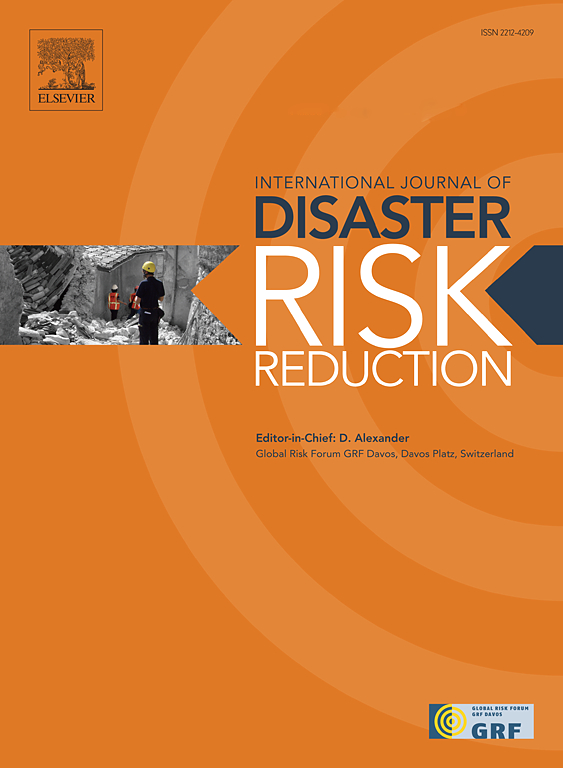Flashpoints between wildfire recovery & mitigation in northern California
IF 4.2
1区 地球科学
Q1 GEOSCIENCES, MULTIDISCIPLINARY
International journal of disaster risk reduction
Pub Date : 2025-02-12
DOI:10.1016/j.ijdrr.2025.105270
引用次数: 0
Abstract
In recent years, wildfires in the western United States have become more challenging to manage, with extreme wildfire behavior, larger fires, and longer fire seasons contributing to rising losses. Community and government leaders are realizing that suppression alone is untenable for future wildfire prevention and seek a wider range of risk reduction strategies from the community to the household levels. Simultaneously, these leaders are faced with the challenge of expeditiously rebuilding communities in the wildland-urban interface (WUI), sometimes after multiple fires that have occurred in quick succession. Although the post-fire recovery period offers opportunities to create safer, more fire-adapted communities, the dual goals of wildfire mitigation and recovery are often at odds. This study investigates changes in the post-fire policy environment across three California counties impacted by recent destructive and repetitive wildfires. Drawing on semi-structured interviews with government officials, wildfire professionals, and informal community leaders, we identify key tensions and synergies, or “flashpoints,” participants encountered when addressing risk reduction and recovery simultaneously. These issues emerged across three policy priorities: housing reconstruction, vegetation management, and economic recovery. Despite a largely shared view of wildfire as a chronic hazard, participants identified ways that risk reduction conflicted with the pursuit of housing restoration and economic development. Synergies included alignment between ecological recovery goals and risk reduction and instances of compromise in housing restoration, plan integration, and new partnerships forged in recovery. Based upon our findings, we discuss opportunities for advancing recovery and mitigation together that could translate to post-wildfire learning elsewhere.
求助全文
约1分钟内获得全文
求助全文
来源期刊

International journal of disaster risk reduction
GEOSCIENCES, MULTIDISCIPLINARYMETEOROLOGY-METEOROLOGY & ATMOSPHERIC SCIENCES
CiteScore
8.70
自引率
18.00%
发文量
688
审稿时长
79 days
期刊介绍:
The International Journal of Disaster Risk Reduction (IJDRR) is the journal for researchers, policymakers and practitioners across diverse disciplines: earth sciences and their implications; environmental sciences; engineering; urban studies; geography; and the social sciences. IJDRR publishes fundamental and applied research, critical reviews, policy papers and case studies with a particular focus on multi-disciplinary research that aims to reduce the impact of natural, technological, social and intentional disasters. IJDRR stimulates exchange of ideas and knowledge transfer on disaster research, mitigation, adaptation, prevention and risk reduction at all geographical scales: local, national and international.
Key topics:-
-multifaceted disaster and cascading disasters
-the development of disaster risk reduction strategies and techniques
-discussion and development of effective warning and educational systems for risk management at all levels
-disasters associated with climate change
-vulnerability analysis and vulnerability trends
-emerging risks
-resilience against disasters.
The journal particularly encourages papers that approach risk from a multi-disciplinary perspective.
 求助内容:
求助内容: 应助结果提醒方式:
应助结果提醒方式:


